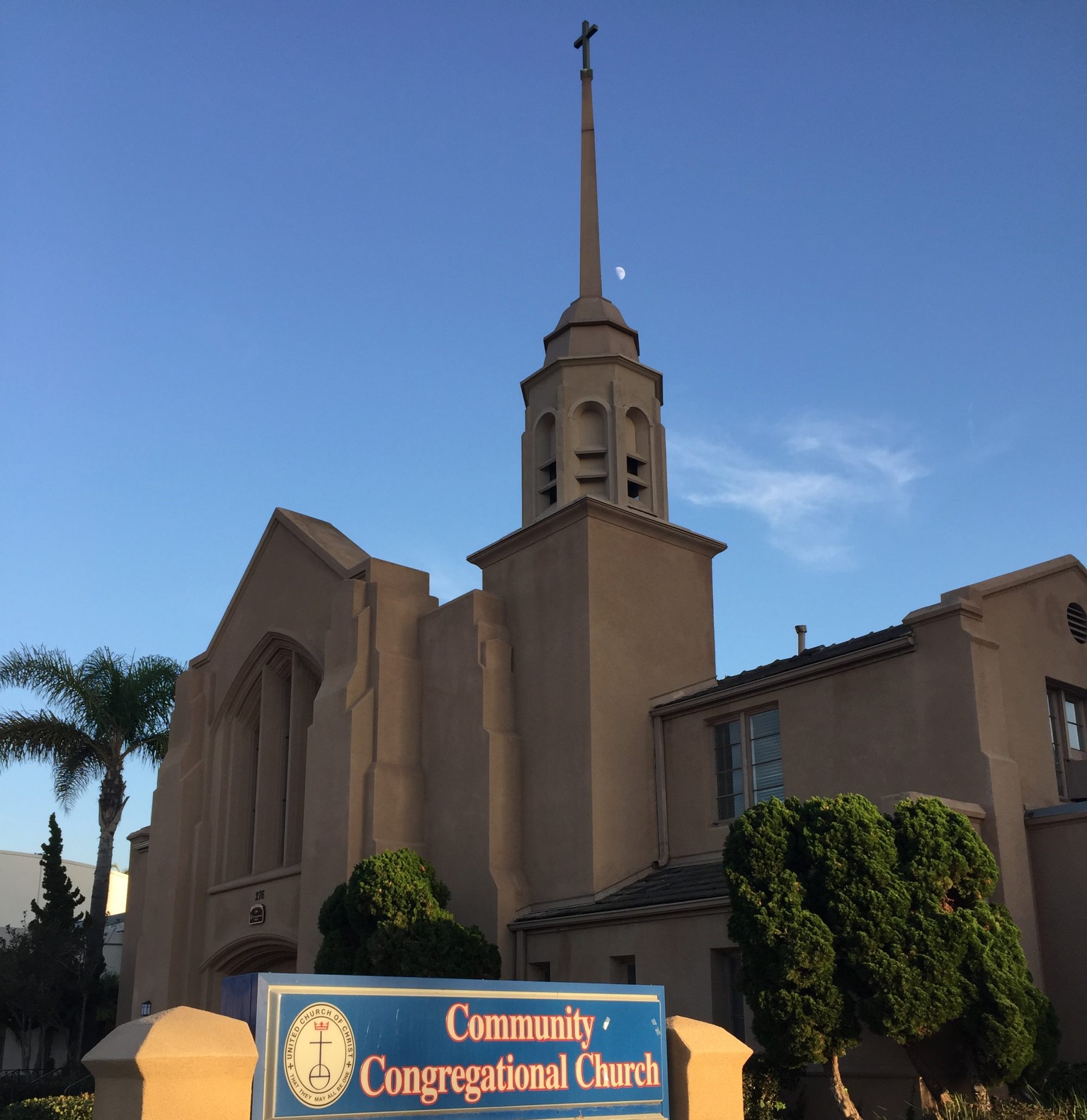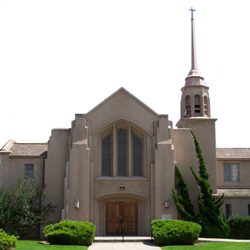“When Fears Loom”
A Meditation Based on Luke 24:36-48
April 15, 2018
Community Congregational Church of Chula Vista
Dr. Sharon R. Graff
* * * * *
(Give credit to the UCC website, “Sermon Seeds,” written by Rev. Kathryn Matthews)
Here we are…two weeks after Easter Sunday…2,000 years down the Christian road from those first disciples. Yet here we are, plagued by some of the same fear and bewilderment they had, asking some of those same questions they asked, wondering, as did they, could this possibly be true?
Let’s start where they did…with our fears. Every week, in this sacred space, we speak our prayers out loud. With our outside voices, we name those for whom we are praying. So let me ask you to do the same here and now: what do you fear? [name those fears…] Now imagine the living breathing resurrected Jesus standing here, in the middle of your fears. Close your eyes, if you need to, in order to imagine such a thing. Imagine Jesus here—the living breathing resurrected Jesus—right here, in the middle of your fears. How does that change the tone of those fears? What thoughts meander through your brain? What emotions arise for you? What questions does his presence engender? I’m not looking for Sunday School answers here! But honest ones. Truly, if Jesus—the living breathing resurrected Jesus—appeared here with Community Congregational Church, and sat down right in the middle of all these fears, how might that holy presence change your fear? As the Christian mystics say, let’s sit with that for just a moment… And, hopefully, as we sit quietly, as we breathe gently, our fears will themselves diminish.
We are so much like those earliest disciples, aren’t we? We wonder about the things we’ve heard about this Risen Jesus. We wrestle with the question, “What does all of this mean?” Deep in your hearts, and maybe even deeper in your minds, you wonder, what could resurrection mean in your life? Is this just a story from long ago, or could the presence of the living breathing resurrected Jesus profoundly change your life, the life of this congregation, as it did theirs?
The picture Luke paints of those earliest disciples is one of fear and confusion, framed by questions. Maybe they weren’t burdened, as we are, by modern-day doubts or 21st-century fears, but they had fears enough of their own to confront. Their heads and their hearts both needed help. Perhaps like us, they were caught between head and heart—trying to explain resurrection while also experiencing resurrection. No one then and no one now really knows how to “explain” the Resurrection, so the disciples long ago—and we, in our own day—can only try to describe a personal experience of it. We can apply head and heart to this endeavor. We read the story of the two disciples whose eyes kept them from recognizing the resurrected Jesus on the road to Emmaus (even though their hearts were mysteriously burning as he spoke).
This week’s passage follows closely, and speaks of an offer of peace, a request for food, a blessing and a commissioning—all from the living breathing resurrected Jesus. And, apparently, this Jesus was not like anything they had ever seen before! Not like Lazarus, a resuscitated corpse, and not even like Jesus was before the crucifixion. On the one hand, locked doors didn’t keep him out, but on the other hand, he could still eat solid food, just like them, which is interesting. In the face of this new reality, the disciples, (as one author notes rather humorously) the disciples now must embark on a steep spiritual learning curve…yeah, I’ll bet!
Encountering the risen Jesus is a powerful experience, and yet, in this story, once he’s done the very human, earthy thing of eating the fish, he does the same thing he did with the disciples on the road to Emmaus: he leads them in a Bible study. The signs of breaking bread and eating fish (remember the feeding of the multitude?) combine with the study of the Word of God to help the disciples (and us) to make some sense of “all of this.”
I doubt that Jesus was proof-texting in that Bible study—you know, tripping through scripture and finding passages that would justify his place. Rather, don’t you imagine the ever-imaginative Teacher Jesus drawing their attention back to Moses and the prophets, and revealing for them how rejection and suffering are part of the journey with God…an affirmation that God will be with you, always. The Gospel tells us, the combination of seeing Jesus, of being with him, and the sharing of the Word together, opened the disciples’ hearts and minds. It moved them beyond fear. Then, as now.
Many years ago, a book was written about the power of fear to put roadblocks in our way. I read it, cover to cover, and then realized, with a laugh, that I could have saved myself a lot of time…for the title was the best part of the whole thing! “Feel the Fear…And Do it Anyway…” That was it! The Gospel of the Living Breathing Resurrected Jesus in seven short words. Feel the fear…and do it anyway.
And what exactly is that “it” that we are to do? I believe the many, many stories of the living breathing resurrected Jesus affirm that the “it” is not about believing something about corpses reanimating or trying to explain with our brilliant minds only, how in the world that garden tomb was empty. After years of my own struggles with this living breathing resurrected Jesus, I know that the “it” is far more than an affirmation of faith. The “it” into which you are each invited is an experience—ongoing and episodic—an openness of your hearts and our minds to see and hear and touch and use all those amazing God-given senses to experience the living breathing resurrected Jesus in your own life. And the greatest news of all, I think, is that there is no one right way to have this experience. Each of us will experience resurrected life in ways that make sense for our lives. And those experiences shift and change over time, again, for each of us. My experience need not be yours, nor yours mine. And yet, miraculously, God meets each one of us through the actions of this living breathing resurrected One, whose breath enters your nostrils and whose heart beats through your own and whose passion for justice and righteousness marches on through your feet and your arms and your hands and despite your many fears.
For you see, the experience of those early disciples who touched Jesus, put their hands in his wounds and heard his voice, fed his hunger, received his blessing, is the same experience of Christians today who feed the hungry, break bread together, hunger for God’s blessing, and respond to the call to turn our lives toward God once again. Because of the Resurrection, then, everything is different for Christians, and not just on Easter Sunday. But for fifty-one more Sundays and all the weekdays in between. As another author has noted, “new life never slips in the back door quietly or painlessly.” It drives in every single day, and, if we are open to it, resurrected life challenges any tired old scripts in any tomb in which we might reside.
What if, the physicality of this resurrected Jesus—even for a short time—the fact that he walked and talked and cooked and ate a piece of fish—all those physical parts of being human—what if Jesus was transferring those to his disciples? And by extension, to us? Jesus drew their attention to his hands and his feet, and can’t you just imagine how the disciples in that moment recalled the many ways the hands and feet of Jesus had been important in his ministry—healing people, breaking bread, traveling around with the good news. Now, wounded and bruised, those same hands and feet were proof to the disciples that he had gone through the danger and not around it. He had gone through the fear and not avoided it. He had gone through the trauma and become stronger from it.
Barbara Brown Taylor—one of my favorite Christian authors writing today—talks about this very aspect of the living breathing resurrected Jesus. She invites us to see that we, his followers, bear hope for the world because we are the Body, and the Image, of the Risen Christ in the world today: “Not our pretty faces and not our sincere eyes but our hands and feet—what we have done with them and where we have gone with them.”
When I think about transformation, about eyes and hearts opened to understanding things that formerly we were closed to, I’m reminded of the powerful experience of watching the YouTube video of a Scottish woman, humble but hopeful, on a talent show several years ago. Susan Boyle stunned a disbelieving crowd that had already judged her undeserving of their affirmation, because of worldly standards that determine how a “star” should look and speak. Three notes into her song, however, there was a mass transformation of the crowd, their hearts moved by her exceptional voice, completely unexpected. The goodness of her gifts, given by God, made her radiantly beautiful in the eyes of those who watched and listened. But the transformation was of their hearts and minds, not of her, for she left the stage the same beautiful woman who had walked onto it, claiming her dream of being a great musical star.
You see, in resurrected life, not only our fears are left in the dust. Our preconceptions are, as well. In resurrected life, we quickly learn that our safe categories simply do not work anymore. Our labels and our judgments, in the light of resurrected life, are rendered obsolete. The Apostle Paul says it so well, having his own pronounced experience of the living breathing resurrected Jesus on that dusty Damascus Road. He later writes these words, “There is no longer Jew or Greek, there is no longer slave or free, there is no longer male and female…” and we could add a few categories of our own—there is no longer old or young, Asian or Anglo, gay or straight, short or tall—for, as Paul concludes, “all of you are one in Christ Jesus.” Friends, that is resurrected life. This is resurrected life, right here, within Community Congregational Church. Despite your fears, regardless the categories that might have worked for you in the past, you know in your core (because you live it here) the living breathing resurrected life that exploded out of that garden tomb and now permeates all of life, is new, unrecognizable, addressing fear by moving you through it and way beyond it.
So where are you, two weeks after Easter? The power of experiencing the risen Jesus enabled the early Christians to endure persecution and trials, and it enables you to name your fears and to step through them. I’ve noticed a tentativeness around here. Sometimes it seems borne of fears of the past reappearing somehow. Fears that a leader might disappoint you, or worse. Fears that people might leave, or worse. Fears that your best days are behind you and not ahead. Those fears loom. At other times, however, your tentativeness seems borne of a kindness and a gentleness that wants not to hurt another, and so waits for the other to speak, to act, to move, to decide. That gentleness, sisters and brothers, is like that permeating light emanating from that long ago garden tomb. The light of the living breathing resurrected Jesus. Walk into that light—the light of gentleness, the light of kindness—and you, too, will breathe in all the resurrected energy you need to banish any fear.
Amen and Blessed Be

